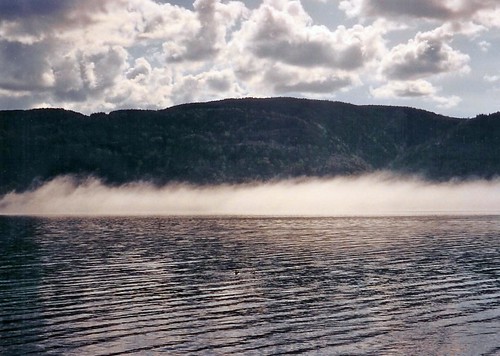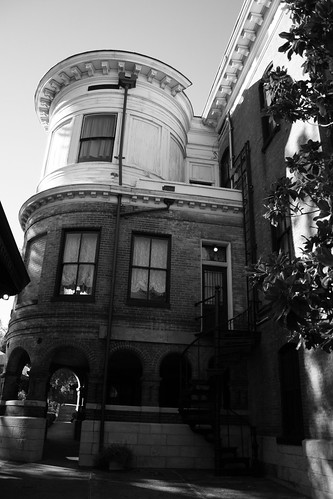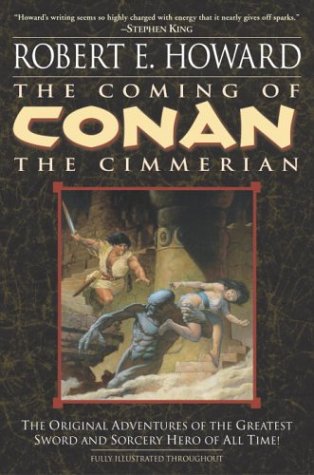New DaRK
Book Review: "Runner" Leaves You Breathless"My Favorite Christmas Movie Is..." (Part 2)
"My Favorite Christmas Movie Is..." (Part 1)
Under God's Right Arm: Santa Claus is a Terrorist
Who Won the Free Copy of "Groundswell"?
12 Signs That You Might Be Santa Claus
5 Questions About: Crime Noir
Fantasically Bad Cinema: "The X-Files: I Want to B...
Book Review: "The Brass Verdict" Plays It Safe
5 Questions About: Getting Published
Our Ongoing Features
5 Questions AboutLiterary Criticism
Fantastically Bad Cinema
Essays
Under God's Right Arm
Archive
May 2006June 2006
July 2006
August 2006
September 2006
October 2006
November 2006
December 2006
January 2007
February 2007
March 2007
April 2007
May 2007
June 2007
July 2007
August 2007
September 2007
October 2007
November 2007
December 2007
January 2008
February 2008
March 2008
April 2008
May 2008
June 2008
July 2008
August 2008
September 2008
October 2008
November 2008
December 2008
January 2009
February 2009
March 2009
Twitter
DaRK PaRTY NeTWORK
Arcanum CafeAlcoholic Poet
Baby Got Books
Beaman's World
BiblioAddict
Biblio Brat
Bill Crider's Pop Cultural Magazine
The Bleeding Tree
Blog Cabins: Movie Reviews
A Book Blogger's Diary
BookClover
Bookgasm
Bookgirl's Nightstand
Books I Done Read
Book Stack
The Book Trib
Cold Hard Football Facts
Creator of Circumstance
D-Movie Critic
The Dark Phantom Review
The Dark Sublime
Darque Reviews
Dave's Movie Reviews
Dane of War
David H. Schleicher
Devourer of Books
A Dribble of Ink
The Drunken Severed Head
Editorial Ass
Emerging Emma
Enter the Octopus
Fatally Yours
Flickhead
The Genre Files
The Gravel Pit
Gravetapping
Hello! Yoshi
HighTalk
Highway 62
The Horrors Of It All
In No Particular Order
It's A Blog Eat Blog World
Killer Kittens From Beyond the Grave
The Lair of the Evil DM
Loose Leafs From a Commonplace
Lost in the Frame
Little Black Duck
Madam Miaow Says
McSweeney's
Metaxucafe
Mike Snider on Poetry
The Millions
Moon in the Gutter
New Movie Cynics Reviews
Naked Without Books
A Newbie's Guide to Publishing
New & Improved Ed Gorman
9 to 5 Poet
No Smoking in the Skull Cave
Orpheus Sings the Guitar Electric
Polly Frost's Blog
Pop Sensation
Raincoaster
R.A. Salvatore
Reading is My Superpower
Richard Gibson
SciFi Chick
She Is Too Fond Of Books
The Short Review
Small Crimes
So Many Books
The Soulless Machine Review
Sunset Gun
That Shakesperherian Rag
Thorne's World
The Toasted Scrimitar
This Distracted Globe
Tomb It May Concern
2 Blowhards
Under God's Right Arm
A Variety of Words
The Vault of Horrr
Ward 6
When the Dead Walk the Earth
The World in the Satin Bag
Zoe's Fantasy
Zombo's Closet of Horror
Bookaholic Blogring
Power By Ringsurf
Tuesday, December 30, 2008
5 Questions About: Haunted Places
An Interview About Scary Places - Real, Imagined, and on the Big Screen
(Setting can be powerful and scary. Can you imagine “The Texas Chainsaw Massacre” filmed in downtown Madison, Wisconsin? Would Stephen King’s “The Shining” be as frightening if it took place in New York City? Hardly. DaRK PaRTY stumbled upon a remarkable site recently – TheCabinet.com. One of the sections of this amazing horror focused web site is dark destinations. These are the haunted, horrible places that people like to visit – on vacation. Who knew there was a cottage industry around visiting tombs and alleged haunted houses? Well, Casey Hopkins and Tom Gleason, the writers and publishers of TheCabinet.com, of course. Both Casey and Tom took time off their haunted travels to answer our questions).
DaRK PaRTY: What are the criteria to be considered a dark destination?
Casey: The scope of Dark Destinations is quite large and very inclusive. Basically, if there is a dark history, story, tradition, theme, etc. we try to cover it. This can include the paranormal, cryptozoological, horror-genre sites (conventions, film/literary locations, personalities, etc.), infamous crimes, Halloween haunts/festivals, and much, much more.
The interesting thing we find is that locations tend to encompass more than just one general theme and that by focusing in one element (say the paranormal), you tend to miss out on so many interesting stories that a place has to offer. The other interesting note is how interconnected all of the locations can be. It is not unusual for us to start work on writing an article on one location and end up with several other locations as a result. It actually can be quite maddening at times from the writing standpoint but fascinating from a historical perspective.
 DP: Why do you think people want to visit scary places?
DP: Why do you think people want to visit scary places?Casey: I think it depends on the individual. As I mentioned, we cover a wide array of topics that can and will attract different people, each with their own different motivation for visiting them. It is fascinating to see how there are so many types of so-called dark tourism. You have the "ghost tourism" where people are traveling to alleged haunted locations, "grief tourism" (also known as thanotourism) where people are traveling to a site of a horrific crime or disaster, "movie tourism" that sends fans to the spots where their favorite movies were made (typically in our case - horror films), "cryptid tourism" that involves searching for mysterious creatures like Bigfoot or the Loch Ness Monster, and more.
It could be that people travel to reportedly haunted locales for much of the same reason that they might attend a Halloween haunted house or Disneyland's Haunted Mansion - for a quick thrill or scare. Others may be interested in the phenomenon and what it means to their own mortality. Then there are people that travel to sites like Auschwitz or the World Trade Center to either honor the lives lost there or to see some form of closure or acceptance to a horrific crime. The interesting thing is when the various types cross paths like the Lizzie Borden Bed and Breakfast. It is not only rumored to be home to paranormal activity, but is also the site of a gruesome double murder and people pay to stay the night there - even in the very room where one of the murders took place.
Tom: Which my wife and I did back in October of 2000. That was an interesting experience. The owners of the bed and breakfast have done a wonderful job with recreating the home as it looked at the time of the murders. They have crime scene photos displayed in the rooms where the murders happened. I had one hanging over my head all night.
 During our stay the city of Fall River had scheduled a power outage for the block the Borden house sits on. They needed to cut power due to work the city was performing. The power was shut off at midnight, and it caused the bed and breakfast's alarm system to begin loudly beeping because it was on backup power. The alarm was at the bottom of the stairs near our room. We woke up and used tap lights to find the source of the sound. It was spooky walking around in very dim light in a reputedly haunted house, especially when there were mannequins clothed in Victorian dresses lurking about in the darkness. We felt like we were in a Nancy Drew or Hardy Boys novel. I highly recommend the Lizzie Borden Bed and Breakfast.
During our stay the city of Fall River had scheduled a power outage for the block the Borden house sits on. They needed to cut power due to work the city was performing. The power was shut off at midnight, and it caused the bed and breakfast's alarm system to begin loudly beeping because it was on backup power. The alarm was at the bottom of the stairs near our room. We woke up and used tap lights to find the source of the sound. It was spooky walking around in very dim light in a reputedly haunted house, especially when there were mannequins clothed in Victorian dresses lurking about in the darkness. We felt like we were in a Nancy Drew or Hardy Boys novel. I highly recommend the Lizzie Borden Bed and Breakfast.DP: In your opinion what are the three scariest places to visit and why?
Tom: For me, the scariest place is the ocean. I'm terrified of deep water, especially when there are sharks, giant squids and other creepy things lurking within it. I'm able to go whale watching on boats, but the idea of scuba-diving is one that scares the hell out of me. Lakes creep me out too. I once lived by a man-made lake that had a former town submerged in it. I heard stories that a church steeple sometimes stuck up out of the lake's waters. I was also told that they didn't relocate the bodies buried in the churchyard when the lake was made. I don't know if there was any truth to the stories, but they bothered me.
Ultimately, fear is subjective. There are places on land that might terrify others, but I generally just find them interesting and a little spooky. Deep water is what hits my fear buttons.
Casey: Probably the most poignant moment I have personally ever had was visiting "ground zero" of the World Trade Center just a few days prior to the one-year anniversary of the attacks. I had been in New York City in 1998 and stopped by the towers, which made it very surreal to return and find them gone. It somehow made it all the more real and terrifying to see the massive crater and damage to the buildings around the area firsthand. It is pretty much impossible to try and explain the emotions that go through your head in that type of moment.
 Along the same lines, I found Gettysburg to be very unsettling as well. The battlefield today shows no major signs of what happened there, which kind of adds a sanitized feeling to it. However, there is no escaping the knowledge of the tragic suffering and the death that took place there. Of course, it is supposed to be fairly haunted as well, but I can't say that I had any unusual experiences there.
Along the same lines, I found Gettysburg to be very unsettling as well. The battlefield today shows no major signs of what happened there, which kind of adds a sanitized feeling to it. However, there is no escaping the knowledge of the tragic suffering and the death that took place there. Of course, it is supposed to be fairly haunted as well, but I can't say that I had any unusual experiences there.I did have some rather strange things happen during my stay at the Lemp Mansion in Saint Louis, Missouri. The house also has a tragic history of suicide and madness, but the past is often overshadowed by their reports of paranormal activity. While I was there, I felt what seemed to be someone tugging on my shirt and brushing past me on another occasion. Interestingly enough, these types of things make me more curious than anything. Those are the three that first popped into my head from the question, so I guess they would be my picks.
DP: What horror movie do you think uses setting best and why?
Tom: The first film that pops to mind for me is "Session 9." The filmmakers used the old Danvers State Mental Hospital in Danvers, Massachusetts as their setting and filmed on location. The place had been abandoned for decades at that point and had a marvelously creepy vibe even when it had been operating. The abandoned mental hospital is so integral to the movie that it is almost a character. I don't know if the film would have worked had they filmed it somewhere else. The story was also very current at the time. It dealt with an asbestos removal crew working inside the old hospital right around the time the place was undergoing development to turn it into apartments. I've been up to see the apartment complex it became. The place still has a haunting quality to it.
Casey: This is a tough one for me. For some reason or another, films shot in the woods with no signs of civilization tend to get under my skin more than others. I know this probably won't be popular, but I'm going to go with "The Blair Witch Project" as a good example of utilizing the scenery and making it something of a character in the film. For that movie, the inherently creepy woods had a very foreboding feeling around them and I thought were rather successfully presented as being somewhat alive and malevolent - adding to the hopelessness and isolation of the characters.
 DP: What horror book do think utilizes place better than any other and why?
DP: What horror book do think utilizes place better than any other and why?Casey: Shirley Jackson's “The Haunting of Hill House.” It is a fictional location, but she managed to create a living entity in her descriptions of the place. Robert Wise's film adaptation did a very admirable job (often using voiceover narration that was quite literally Jackson's sentences) with it, but the book created a real fun-house effect with the house. I won't even bother to go into the remake of the film.
Tom: I'm with Casey on that choice, even though I've only read the opening paragraph of that book. It was printed as an example in another text I was reading recently. I definitely need to get around to reading that book finally. I find it interesting how much of an impact literature can have on an actual location. Washington Irving's “The Legend of Sleepy Hollow” and Stephenie Meyer's “Twilight Saga” novels have caused Tarrytown, New York and Forks, Washington to transform themselves to varying degrees in order to draw tourism inspired by the fiction.
5 Questions About: Horror Movies (with Fangoria Editor Tony Timpone)
The Greatest Cinematic Serial Killers of All Time
Scary Water Movies
12 Signs That Your Boss Might Be a Zombie
Labels: 5 Questions, Casey Hopkins, Horror, interview, TheCabinet.com, Tom Gleason
 StumbleUpon |
StumbleUpon |
 del.icio.us |
del.icio.us |
 Technorati |
Technorati |
1 Comments:
 Anonymous said...
Anonymous said...
I love interviews like this... thanks!

This work is licensed under a Creative Commons Attribution-No Derivative Works 3.0 License.
The Template is generated via PsycHo and is Licensed.




